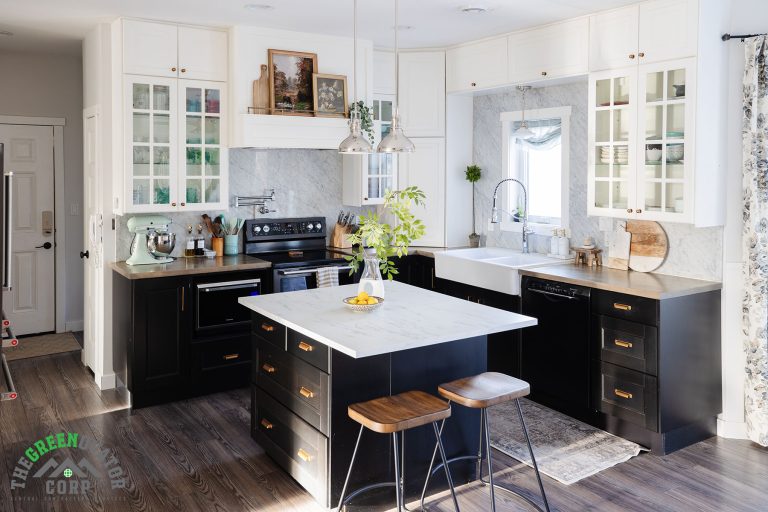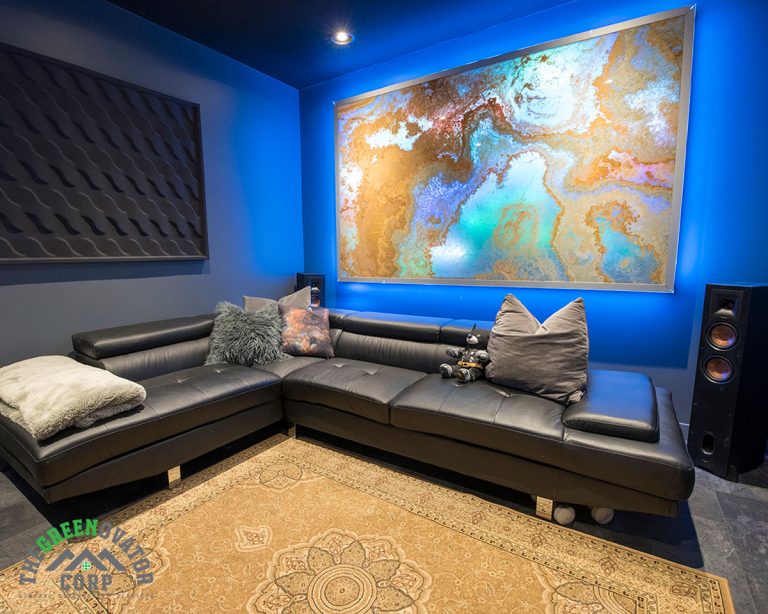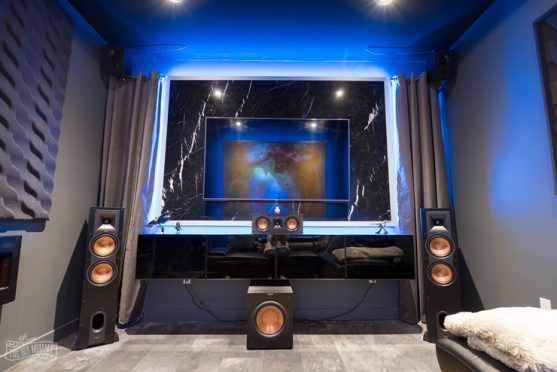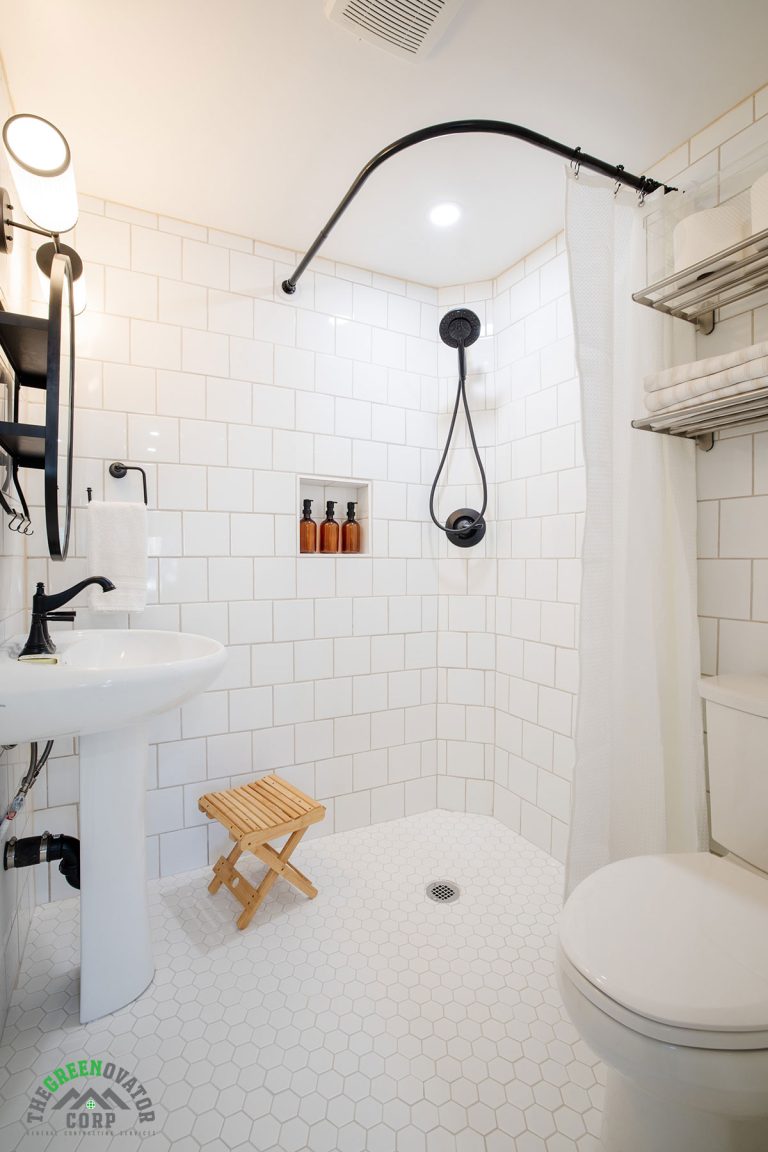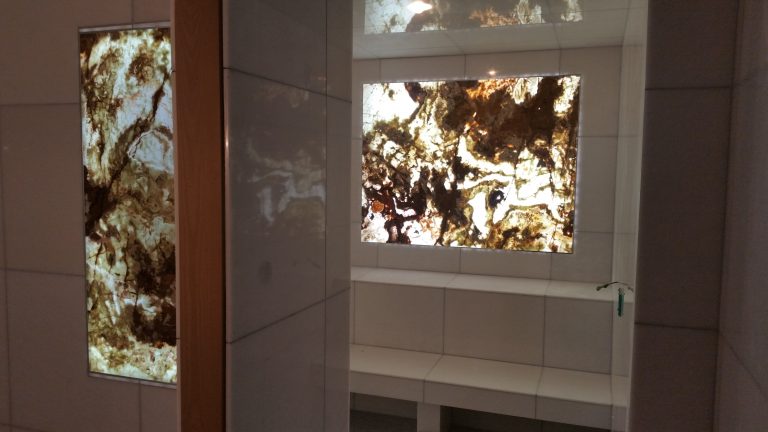When it comes to renovating your home, making eco-friendly renovations not only helps the environment but can also save you money in the long run. Here are the top 5 practical and cost-effective eco-friendly renovations that you can implement relatively quickly and without breaking the bank.
1. Energy-Efficient Lighting
Switching to energy-efficient lighting is one of the easiest and most cost-effective ways to make your home greener.
Implementation Time: A few hours to a couple of days, depending on the size of your home.
Cost: Low to moderate. LED bulbs are slightly more expensive upfront but last significantly longer and consume less energy than traditional bulbs.

Benefits:
- Reduced Energy Consumption: LED bulbs use up to 75% less energy than incandescent lighting.
- Longer Lifespan: LEDs can last up to 25 times longer, reducing the frequency and cost of replacements.
- Lower Utility Bills: Less energy usage translates directly into lower electricity bills.
How to Start: Replace all incandescent or CFL bulbs with LED alternatives. For larger savings, consider installing smart lighting systems that allow for automated control and dimming.
2. Water-Saving Fixtures
Upgrading to water-saving fixtures in your kitchen and bathrooms is a simple yet effective way to reduce water usage.
Implementation Time: A few hours to a couple of days.
Cost: Moderate. Water-efficient fixtures like low-flow showerheads, faucets, and dual-flush toilets range from affordable to moderately priced.
Benefits:
- Reduced Water Usage: These fixtures can reduce water consumption by up to 50%.
- Lower Water Bills: Less water usage results in immediate savings on your water bill.
- Environmental Impact: Conserving water helps protect local water supplies and reduces the strain on wastewater treatment facilities.

How to Start: Install low-flow showerheads and faucet aerators, and consider replacing older toilets with dual-flush models. These upgrades are usually straightforward and can often be done without professional help.

3. Insulation and Weatherproofing
Proper insulation and weatherproofing can drastically improve your home’s energy efficiency, reducing the need for heating and cooling.
Implementation Time: A few days to a week.
Cost: Moderate to high, depending on the extent of the work and the areas insulated.
Benefits:
- Improved Energy Efficiency: Keeps your home warmer in the winter and cooler in the summer, reducing the need for heating and air conditioning.
- Lower Energy Bills: Better insulation means less energy is needed to maintain a comfortable temperature, leading to significant savings on energy bills.
- Enhanced Comfort: Reduces drafts and maintains a more consistent indoor temperature.
How to Start: Focus on insulating areas like the attic, walls, and floors, and ensure windows and doors are properly sealed. Weatherstrip doors and windows and consider adding or upgrading insulation in key areas.

4. Solar Panels and Renewable Energy Sources
Investing in renewable energy sources like solar panels can significantly reduce your carbon footprint and energy costs.
Implementation Time: A few days to a few weeks, depending on the system size and installation requirements.
Cost: High initial investment, but significant long-term savings and potential incentives and rebates.
Benefits:
- Reduced Carbon Footprint: Solar panels produce clean, renewable energy, significantly lowering your home’s greenhouse gas emissions.
- Energy Independence: Generate your own electricity and reduce reliance on grid power.
- Long-Term Savings: Over time, the savings on your electricity bills can offset the initial installation costs, especially with available government incentives.
How to Start: Research local solar installers, and check for available rebates and incentives in your area. Conduct a home energy audit to determine the best system size for your needs.
5. Sustainable Flooring Options
Choosing sustainable flooring materials can be an eco-friendly and stylish update for your home.
Implementation Time: A few days to a couple of weeks, depending on the area and type of flooring.
Cost: Moderate to high, depending on the material chosen.
Benefits:
- Reduced Environmental Impact: Materials like bamboo, cork, and reclaimed wood are renewable and have lower environmental impacts compared to traditional flooring options.
- Durability and Longevity: Many sustainable flooring options are extremely durable and can last longer than conventional materials.
- Aesthetic Appeal: Sustainable flooring options come in a variety of styles and finishes, enhancing the beauty of your home.
How to Start: Evaluate the different sustainable flooring options such as bamboo, cork, or recycled materials. Consider the specific needs and style of each room when choosing your flooring.
Conclusion
These eco-friendly renovations not only help protect the environment but can also enhance your home’s comfort, reduce your utility bills, and increase its value. Start with the simpler, cost-effective options and consider the long-term benefits of more substantial investments like solar panels or sustainable flooring. Making greener choices today is an investment in a healthier, more sustainable future for your home and our planet.

